Drilling Fluid Engineering for HTHP Wells
Drilling high-temperature and high-pressure (HTHP) wells comes with an array of unique technical challenges that require innovative engineering solutions. Among these, the design and management of the drilling fluids is one of the most important factors that affect the safety, success, and efficiency of the operations. Drilling fluid engineering for HTHP wells requires carefully selected and optimized fluid systems that maintain stability, avoid destruction of the formation, and guarantee that pressure control is maintained in extreme subsurface conditions.
Understanding the HTHP Environment
HPHT wells are usually defined by temperatures that exceed 300degF (149°C) and pressures that exceed 10,000psi (69 MPa). Extreme conditions could degrade the drilling fluids used in conventional drills. They can also decrease the efficacy of chemical additives and affect control over wells. The irregular behavior of formations under these conditions, combined with a narrow gap in pressure between fracture and pore pressures, increases the difficulty of the management of fluids.
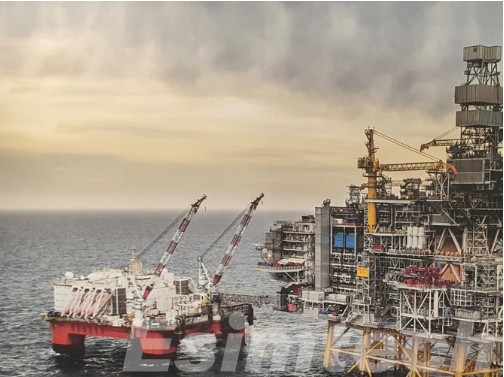
Key Requirements for Drilling Fluid Engineering in HPHT Environments
Engineering drilling fluids for HPHT wells must meet specific performance standards to ensure stability in the wellbore, operational safety, and environmental compliance.
1. Thermal Stability of Fluid Components
In HPHT wells where temperatures downhole can be higher than 300°F (149°C), keeping the integrity of the drilling fluids is crucial. Thermal stability makes sure that the base of the fluid and additives aren’t affected by time. Polymers used to create viscosifiers, filters, reducers of filtrate, and shale inhibitors should be chosen according to their capacity to withstand extreme temperatures without deteriorating. Insufficient thermal stability could cause loss of viscosity and emulsion breakdown, and loss of control over wells.
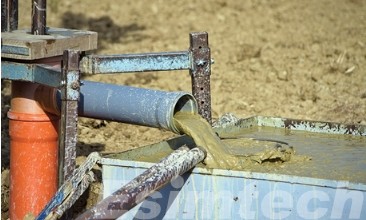
2. Pressure Tolerance and Rheological Control
The fluid also has to withstand high hydrostatic pressures that are often over 10,000 psi. This can affect the density of the fluid as well as the ability to keep the pressure balance within the small space between the pore pressure and the fracture gradient. Effective HPHT fluids are consistent in their Rheological properties, such as viscosity, yield point, as well as gel strength – both in static and dynamic conditions. These properties allow for an efficient cleaning of the hole and suspension of solids and a reduction in pressure surges that occur during operations.
3. Wellbore Stability and Inhibition
HPHT environments typically contain unstable shale formations that react and zones that require cautious wellbore stabilization. Drilling fluids need to form a solid filter cake that will stop the formation from spreading and prevent filtering. Chemical inhibitors, such as silicate, potassium, or glycol-based systems, are employed to limit shale swelling and to prevent the sloughing process from occurring. In addition, maintaining the integrity of the wellbore reduces the possibility of blocked pipes, borehole collapse, and a delay in productive time.
4. Fluid Loss Control
In HPHT wells, Fluid loss control is crucial because of the higher possibility of formation damage as well as loss circulation. A high loss of fluid could result in uneven sticking, weak cement bonding, as well as a decrease in the productivity of wells. Drilling fluids should contain effective high-temperature fluid loss additives, like modified gilsonite, lignites, or resilient graphitic materials that remain active and effective even in extreme conditions.
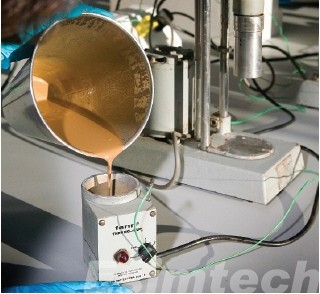
5. Lubricity and Cooling Efficiency
The capacity that the fluid has to provide adequate lubrication is more crucial in HPHT wells, where drag and torque forces are increased because of larger depths and more friction. A proper lubrication system can prevent stuck pipes as well as mechanical breakdowns. Additionally, the fluid needs to effectively disperse energy away from both the drill bit and string to prevent excessive heat and wear on equipment.
6. Barite Sag Prevention
HPHT conditions facilitate the static settlement of weighting substances like barite, in particular in horizontal or deviated wells. The sag of barite causes an inconsistent mud weight and inadequate cleaning of the hole. A properly engineered fluid system must be controlled in its gel structure, have a sufficient capacity for suspension, and be tested under HPHT-specific conditions in order to minimize the danger.
7. Compatibility with formation and completion fluids
The interactions between drilling fluids and future formation or completion fluids should be considered carefully. Incompatibility could result in the formation of precipitation or emulsions, or even scale formation. Fluid systems must be tested for compatibility with downhole fluids to ensure a smooth passage from drilling finalization.
8. Real-Time Monitoring and Adaptability
Due to the nature of dynamic HPHT drilling, continuous monitoring of the conditions of the downhole as well as fluid properties is essential. Modern fluid control systems permit the constant modification of additives and operational parameters. This flexibility improves safety in operation and enhances fluid performance throughout the whole drilling operation.
9. Environmental and Regulatory Compliance
Additionally, HPHT drilling fluids must be able to meet the increasingly stringent environmental requirements, particularly in sensitive or offshore zones. This has led to the development of synthetic-based fluids and high-performance water-based fluids, which reduce environmental impacts without losing any performance.
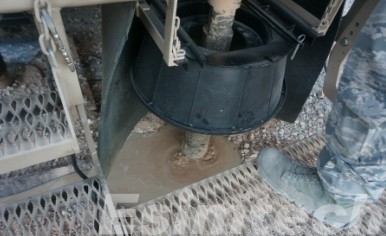
Common Drilling Fluid Systems Used in HTHP Wells
| Drilling Fluid System | Base Type | Key Advantages | Challenges | Typical Applications |
| Oil-Based Mud (OBM) | Diesel/Mineral Oil | Good thermal stability. low loss of fluid, Strong shale inhibition, excellent oil lubricity | Environmental issues, more expensive, and disposal complications | Deep wells, reactive shale formations, high-temperature zones |
| Synthetic-Based Mud (SBM) | Synthetic Hydrocarbons | Similar performance as OBMs with a better environmental profile | It is expensive and requires advanced treatment and disposal equipment | Offshore drilling, sensitive to the environment, HPHT zones |
| High-Performance WBM (HP-WBM) | Water | Better thermal resistance, less environmental impact | A limited thermal range may require complicated systems of additives | Offshore HPHT wells, where SBM/OBM are not allowed to use. |
| Silicate-Based Mud | Water + Silicates | Excellent shale inhibition, excellent thermal stability | Maintenance is high-maintenance, risk of gelation, sensitivity to contamination | Formation of shale reactive deep deviated wells |
| Potassium-Based Mud | Water + KCl | Controls swelling in shale, simple to make | Moderate thermal stability is more effective in high-pressure zones | HPHT wells have moderate temperature and reactive formations |
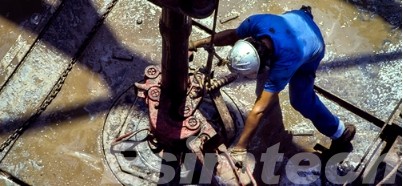
Engineering Considerations and Additive Optimization for Drilling Fluids in HPHT Environments
| Engineering Consideration | Description | Additive Optimization Strategies | Key Benefits |
| Thermal Stability | Fluids have to withstand extreme temperatures without degrading | Make use of thermostable polymers (e.g., sulfonated Asphalt or lignite) | Stabilizes emulsions, viscosity |
| Rheology Management | Control the viscosity and strength of gel at varying temperatures and pressures. | Make sure you have the right concentrations of HT-stable HT viscosifier and clays | Effective cuttings transport, solids suspension |
| Barite Sag Prevention | Beware of the possibility of settling weighting materials in wells that are inclined or static. | Employ gel structure modifiers, particle-size optimized barite | A constant mud density, a reduced chance of a pipe getting stuck. |
| Lubricity Enhancement | Reduce drag and torque. In particular, when drilling directional | Incorporate synthetic or ester-based fluids | Tool life is improved, reducing mechanical wear |
| Chemical Compatibility | Be sure that the additives do not affect liquids used for formation or the completion chemicals | Conduct compatibility tests and select the inert or specialized additives. | It prevents emulsion breakdown, scaling and scaling. |
| Real-Time Monitoring & Adjustment | Make use of sensor data and automation to keep fluid properties in check dynamically | Integrate automated dosing systems and digital twin systems. | Improved fluid management and adaptive operational safety |
| Environmental Impact | Performance must be balanced in the face of environmental and regulatory issues | Create biodegradable, low-toxicity, and non-toxic additives. | Sustainable drilling practices |

How Simulation Technology is Used for Drilling Fluid Engineering in HPHT Environments
Oil and gas simulation technology is now an essential tool for drilling fluid engineering, allowing precise predictions and optimization of fluid performance.
- Rheological Modeling for Optimal Fluid Behavior
One of the most important applications of simulations for HPHT hydraulic drilling is the rheological model. Computerized tools simulate how fluids react to changes in temperature, pressure, and shear speeds. Engineers can modify additives in order to achieve the optimal viscosity, yield point, and gel strength required to ensure efficient cuttings transportation and suspension of weight-bearing materials like barite, even in the most extreme conditions.
- Thermal Stability Prediction Through Chemical Kinetics
Simulation techniques also simulate the degradation of additives and polymers at high temperatures that are common in HPHT wells. By anticipating how chemical components break down in time, engineers can choose and design additives which maintain their effectiveness in temperatures that exceed 400degF (204°C) and thereby avoid the loss of viscosity and emulsion stability.
- Fluid Loss and Filter Cake Formation Simulations
Utilizing CFD, or computational fluid dynamics (CFD) simulations, models replicate the interactions between formation rocks and drilling fluids in high-pressure gradients. These models aid in predicting filter cake invasion, the thickness of the filter cake, as well as the reduction of permeability. In turn, additives for loss of fluid and particle sizes can be adjusted in order to limit damage to the formation while maintaining stability of the wellbore.
- The Barite Saga Analysis along with Particle Dynamics
Barite sag is a major risk when HPHT drilling, leading to an uneven weight of mud and well control problems. Simulation techniques like DEM (DEM) study the settling behaviour of particles that are weighted in a variety of fluid rheologies. These findings guide the design of suspensions and fluid gels to ensure uniform distribution of particles, particularly in static or inclined wellbores.
- Real-Time Monitoring and Adaptive Control
Advanced drilling operations incorporate real-time sensor data with drilling simulation models to produce digital twins of the drilling system. This permits constant monitoring and predictive adjustments to the properties of fluids like viscosity and density. Flexible fluid management helps reduce wasted time and increases safety margins by responding quickly to changing conditions in the downhole.
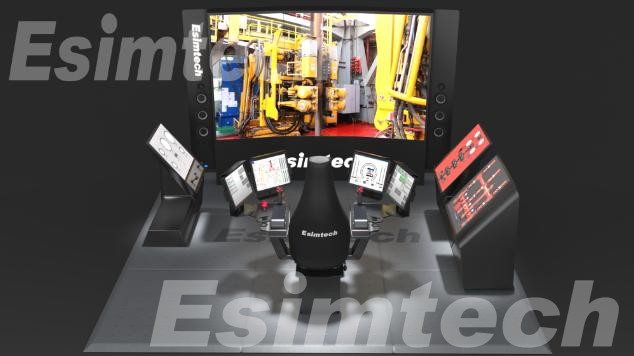
- Environmental Impact and Cost Efficiency Modeling
Simulation technology can also aid in the evaluation of eco-friendly additives and fluid formulations that are cost-effective. By anticipating performance in HPHT circumstances, scientists are able to achieve sustainability goals while meeting operational demands, eliminating the necessity for costly field tests.
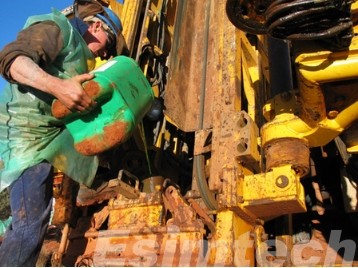
Challenges and Future Directions in Drilling Fluid Engineering for HPHT Wells
| Challenges | Description | Future Directions | Focus Areas |
| Thermal Degradation | Additives cease to function at very hot temperatures (> 400°F) and cause instability in the fluid | Development of ultra-high-temperature resistant polymers and additives | Nanomaterials, advanced polymer chemistry, and advanced polymer chemistry |
| Rheology Control | Maintaining optimal viscosity and strength in extreme temperatures and pressures | Continuous monitoring of rheology and the elasticity of fluid systems | Smart fluids, sensor integration |
| Barite Sag | Weighting materials are set to settle, causing changes in density and controlling the risk | Innovative weighting agents to weigh and better suspension additives | Particle engineering, gel structure optimization |
| Fluid Loss and Filtration Control | The increased invasion of the filtrate is a risk of causing damage | High-performance fluid loss additives that are high-performance, as well as an intelligent design of the filter cake | Nano-scale bridging particles, responsive additives |
| Environmental and Regulatory Constraints | The use of oil-based muds is limited by environmental regulations | The development of environmentally friendly, high-performance synthetic and water-based fluids | Biodegradable ingredients, green chemistry |
| Cost and Operational Complexity | Complexity and high cost are involved in HPHT Fluid formulation as well as maintenance | Automation, Digital Twin technology, and affordable additive synthesizing | AI-driven optimization and process automation |
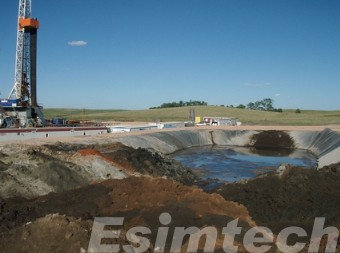
Summary
Drilling fluid engineering for HTHP wells is a highly specialized field that requires advanced chemical formulations, rigorous testing, and real-time adaptive control. A well-designed drilling fluid system, properly engineered and managed, can significantly reduce the time spent on non-productive work, increase security, and guarantee that drilling is successful in the most challenging environments encountered in the oil and gas industry.
